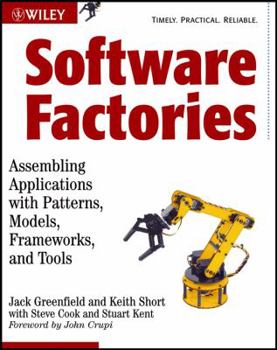Software Factories: Assembling Applications with Patterns, Models, Frameworks, and Tools
Select Format
Select Condition 
Book Overview
Customer Reviews
Rated 5 starsExceptional reasoning on software construction
Wow! I bought this book a long time ago and it lived on my "bibliophile" stack of bought but unread gems. It's a stunning book if you seek to understand the decomposition of complexity in modern software applications and the complex deployment architectures they work in. My only concern is the book is not an engineering book - there are no mathematical models of scale and performance for distributed decompositions. It has...
0Report
Rated 5 starsFactories are the future
This book provided insightful coverage of what I think is a fascinating topic. THe author organizes the material in a logical manner making it easy to transition from one topic to another. I would have liked more illustrations, but what was supplied was enough for me to understand everything. Very recommended!
0Report
Rated 5 starsdetailed breakdown of product line engineering
This is an awesome book for an overview of the software development industry practices. It includes a detailed breakdown of product line engineering, as well as a ton of other great information. VSTS 2005 missed the mark on Software Architecting Tools, and only includes System Architecting tools. With my own MSDN subscription I opted for the Developer version instead of the Architect version because of this. Microsoft...
0Report
Rated 5 starsThe "state of the art" in software engineering
This book in my mind represents the state of the art in software engineering today. The book is based upon the concept of building families of similar, but distinct products, which have been around for years in other engineering disciplines such as civil, mechanical and electronics engineering. These concepts promote the systematic reuse of like components and factored out variable components for customization in order to...
0Report
Rated 5 starsScholarly and sophisticated
The authors present a massive and sophisticated approach to understanding and integrating patterns, models and frameworks into a project. The tone is scholarly, with many references to important previous papers and texts. The book is targeted at developers and senior programmers. Much of it deals with the different levels of abstraction, and how you move between these. So that if you have designed a project using patterns,...
0Report













